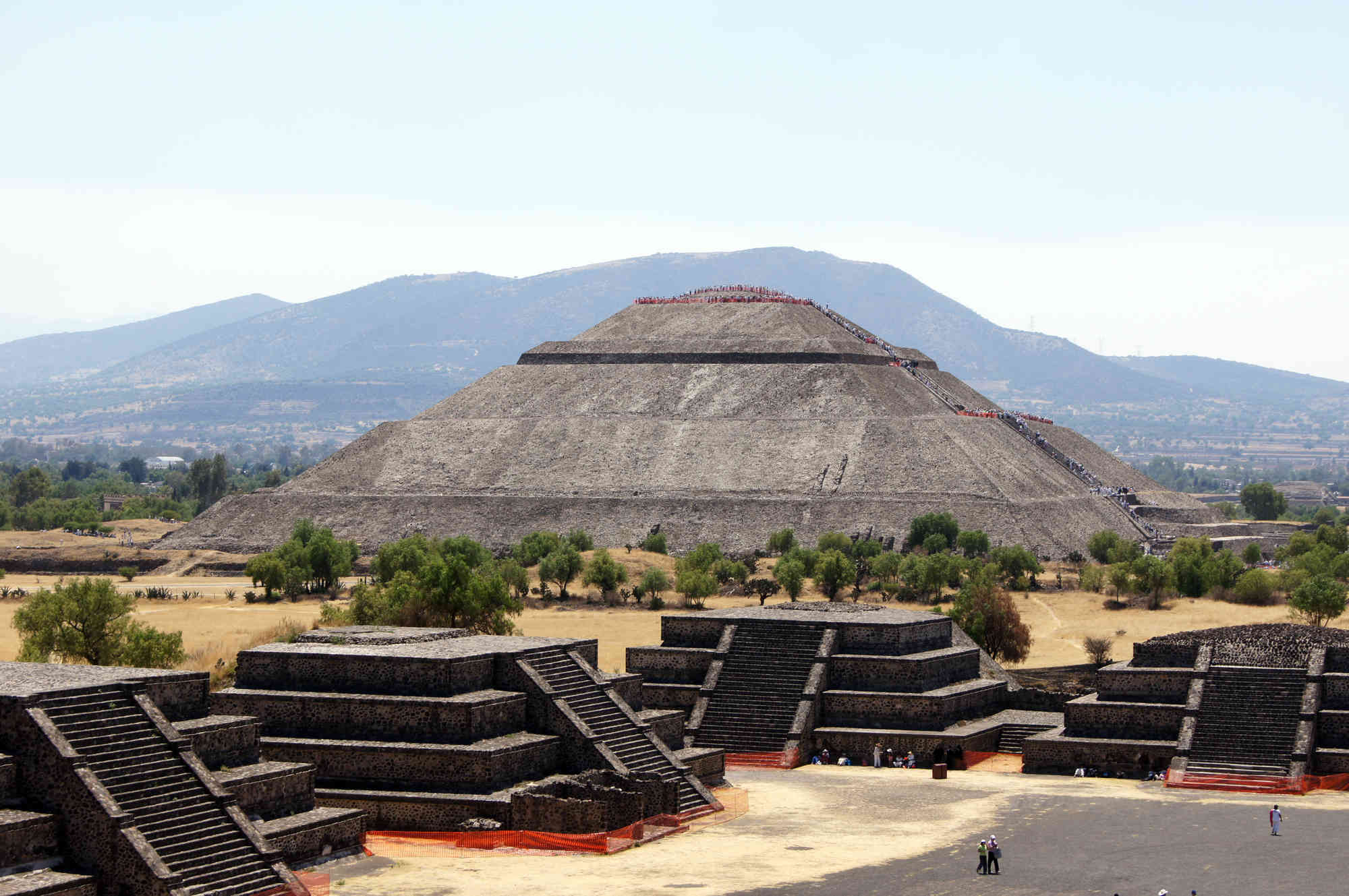Around the thirteenth century, the Aztecs gathered near the basin of present-day Mexico City to create the capital of their Empire: Tenochtitlan. It was a nomadic people, and one of their specificities was the creation of chinampas, the first plots of soilless agriculture. Guided by their protective God, Huitzilopochtli, the Aztecs did not hesitate to ►
Around the thirteenth century, the Aztecs gathered near the basin of present-day Mexico City to create the capital of their Empire: Tenochtitlan. It was a nomadic people, and one of their specificities was the creation of chinampas, the first plots of soilless agriculture. Guided by their protective God, Huitzilopochtli, the Aztecs did not hesitate to settle in Mexico, and it is presently the ideal place to discover the remains of their civilization. The Templo Mayor is located in the historic heart of Mexico City and is entirely dedicated to Huitzilopochtli and Tlaloc, the gods of war and agriculture, respectively. It is adjacent to the Catedral Metropolitana de la Asuncion de Maria and recalls the symbiosis achieved between Christianity and the Aztec pagan rites. Around Mexico City, the sites of Tenayuca, Cholula, and El Tepozteco are must-sees. That said, the pre-Columbian site of Teotihuacan is also worth a visit. Then, of course, it is impossible to miss the famous Pyramid of the Sun and its 248 steps, the Palace of Jaguars, and the Temple of Feathered Snails. These places today show all the power of this civilization. As for the Maya, they built several cities lost in the rainforests of Guatemala, Mexico, and Belize. It is also the oldest civilization of the three, reaching its peak between 250 and 900 AD. The Maya are well known for their keen notions in technical fields such as astronomy, architecture, and agriculture. One of the great sites to visit in Mexico is called the Pyramid of Palenque. It is located in the heart of the Chiapas forest. In the lush nature of this place, it is possible to admire superb mythological sculptures. There are about 1,400 buildings discovered around the pyramid to date. Then, in the heart of the Yucatan, other sites such as Uxmal, Tulum, and Chichen Itza are also worth seeing. The Mayan ruins of Ek Balam, Coba, and Calakmul are to be noticed. In the rainforest of Belize, the Mayans left behind the ruins of Lamanai, the site of Cahal Pech, or the city of Xunantunich, which can be seen by crossing the Mopan River. The gigantic El Castillo Temple reveals a splendid panorama of the canopy of the Cayo District, with a view of Guatemala in the distance. Speaking of Guatemala, you have to go through the city of Chichicastenango to see the Mayan cemetery and the site of Tikal, which is in the heart of Peten. It is a breathtaking landscape with a vast pyramid 70 meters high that is a UNESCO World Heritage Site. The Mayan archaeological site of Yaxha is exciting from a historical point of view. Finally, the Inca civilization was developed between the twelfth and fifteenth centuries in the Andes around the imperial capital Cuzco. The Inca Empire then extended over 4,000 km through Ecuador to present-day Chile. To discover the relics of the political and economic power of the civilization of the people of the Sun, you must go to South American countries such as Ecuador in Ingapirca, Argentina in Quilmes, and Bolivia around Lake Titicaca, as well as Peru. In Peru, it is possible to admire the Sacred Valley of the Incas before accessing the sites Pisac, Huchuy, Yucay, Chichubamba, and Ollantaytambo. In these places, you will get a view of discovering the rites and customs of this culture. That said, the highlight will remain the imperial city of Cuzco, and the citadel of Machu Picchu are places of pure wonders that surprise every time. ◄
